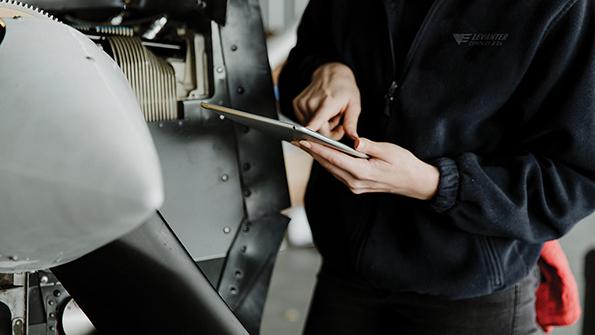Opinion: EASA Should Prioritize Good Parts Over Paperwork Rules

Does a government form make a part airworthy? Some think so. The European Union Aviation Safety Agency (EASA) continues to create controversy and confusion by demanding an FAA Form 8130-3 or an EASA Form 1 accompany every new part used in maintenance subject to the U.S./EU Bilateral Agreement. Repair stations in the U.S. with EASA Part 145 approvals issued under the bilateral pact have spent nearly a decade trying to overcome the problem of not having the demanded documentation for parts otherwise suitable for installation.
Even though the two agencies recognized that both systems of controlling civil aviation create equivalent levels of safety—and that the special conditions provision covers any substantive differences—the privileges of a U.S.-based repair station under Parts 43 and 145 have been lost. It is true that under the bilateral deal and the Technical Implementation Procedures, a production approval holder must issue an FAA Form 8130-3 when a new part is “exported” (i.e., changes jurisdictions from FAA to EASA), but U.S. Part 21 regulations do not require the form. Unless a domestic repair station can demand it under the Part 21 export regulations, specifically Section 21.335, the form need not be issued.
As a result, countless perfectly good parts supposedly cannot be used because they lack the right paperwork. ARSA has been working on this problem for years. In 2016, the association provided instructions for an inspection (Form E100) based upon U.S. regulations that allowed the form to be issued by a repair station under Part 43. For almost six years, the FAA acknowledged the acceptability of this practice under the U.S. rules, allowing the national supply chain to support work performed under the Maintenance Annex Guidance. That compromise fell apart in June when the FAA relented to EASA’s pressure and removed support for its own regulations.
The E100 form documented an inspection with a safety outcome fully consistent with the FAA’s regulatory system, which EASA deemed equivalent to its own when entering the Bilateral Agreement. For the agreement between the two governments to be of any value to certificate or approval holders, the agencies must exercise authority to interpret their own rules. Giving in to demands for additional paperwork with no added safety benefit does a major disservice to the industry it regulates. More broadly, it hurts every certificate or approval holder operating under a bilateral agreement by casting doubt on the foundation of the domestic agency’s rules.
Our collective purpose is airworthiness. It should not be satisfying an agency’s need to cover itself in forms and documents. What matters is the part, not the paperwork.
Sarah MacLeod is managing member of Obadal, Filler, MacLeod & Klein and a founder and executive director of the Aeronautical Repair Station Association. She has advocated for individuals and companies on international aviation safety law, policy and compliance issues for more than 30 years.



